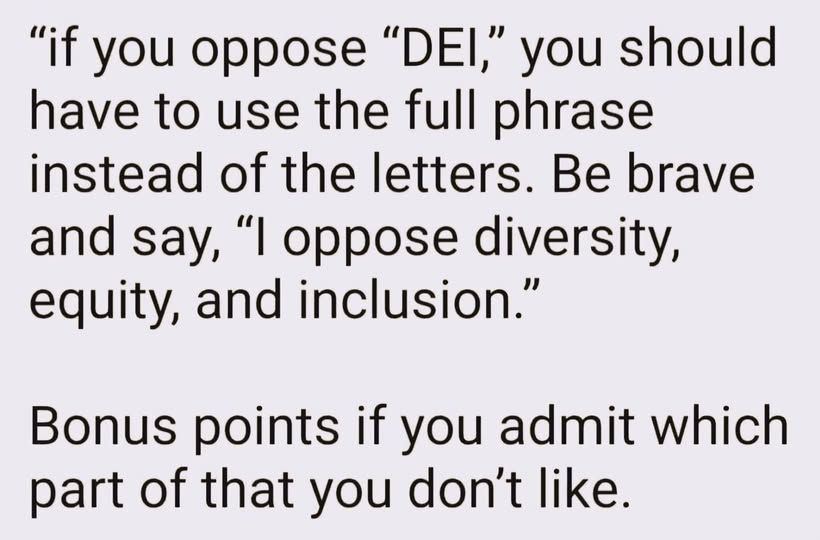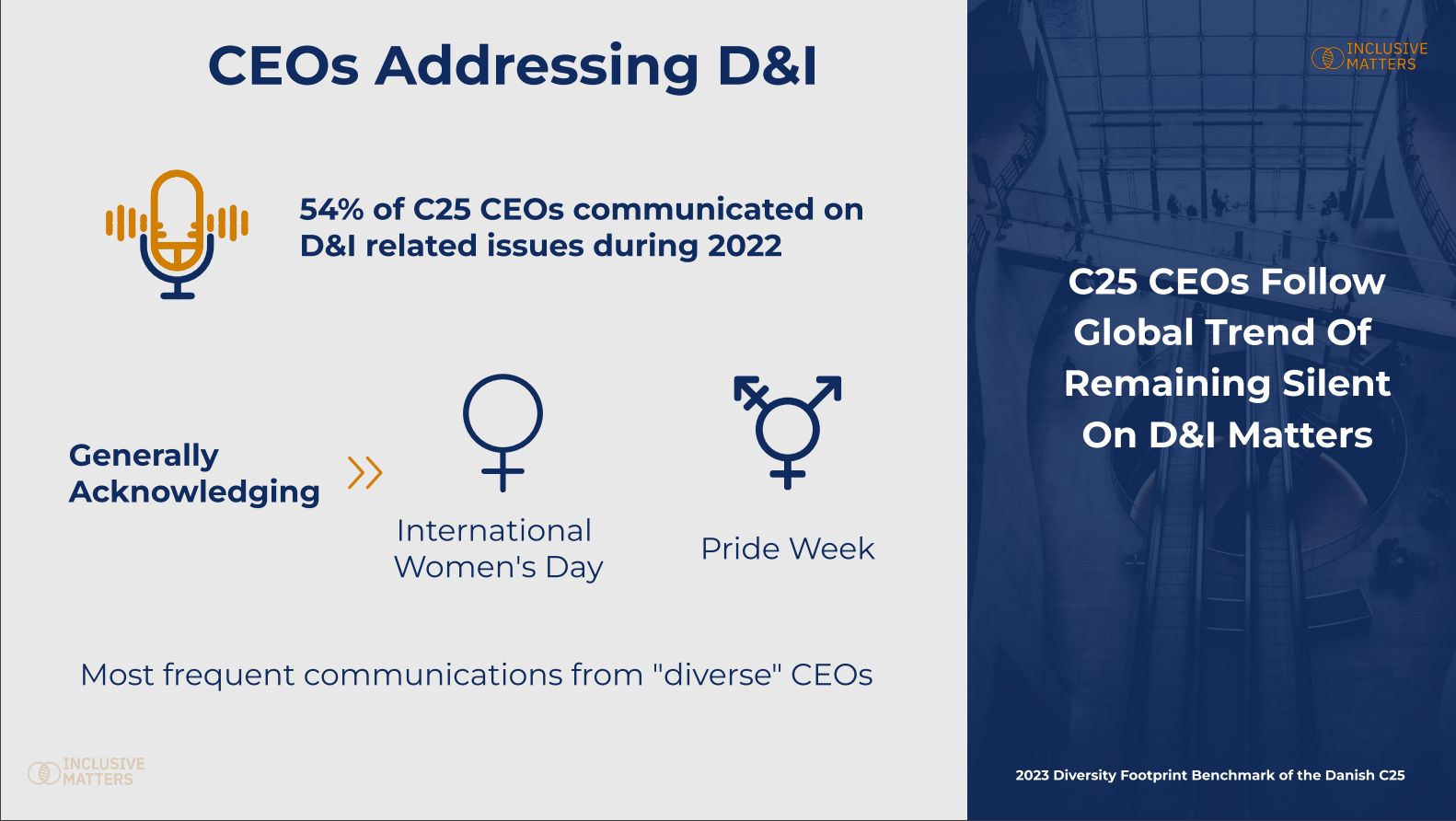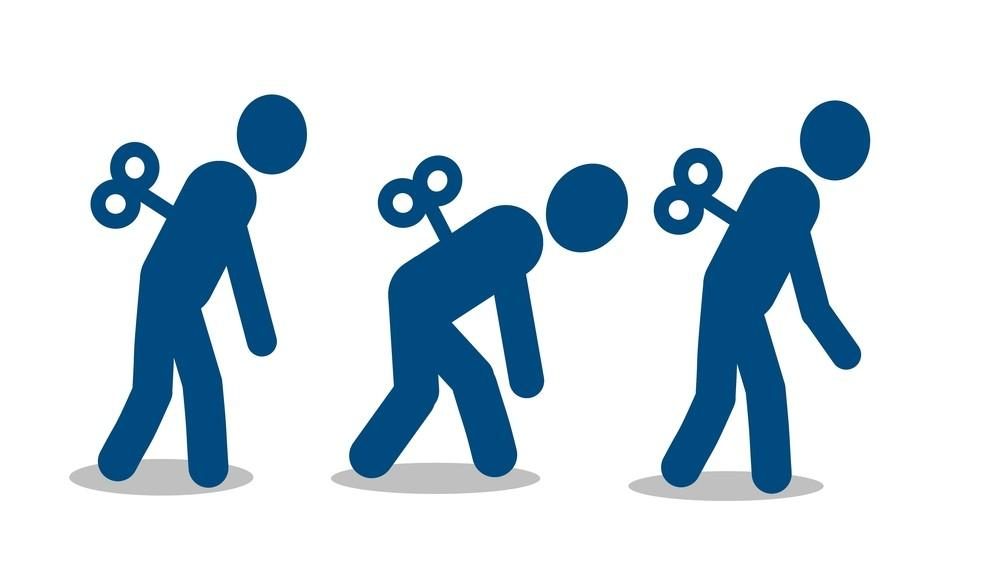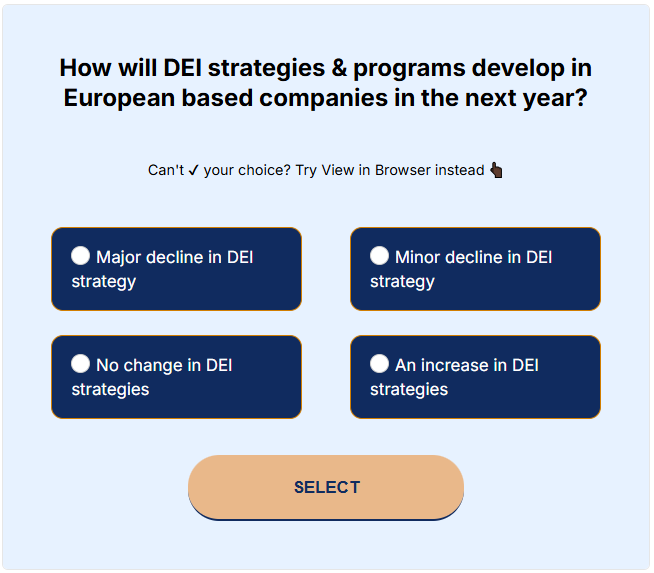Table of Contents
- DEI Trends in Europe: A Tale of Two Continents
- The US Influence on DEI Trends in Europe
- DEI Trends in Europe: The Poll
- Driving DEI Strategy or Just Along for the Ride?
- Which Way Is Your DEI Trending? Spotting the Signs
Let’s be honest, the DEI trends in Europe are a mess right now.
What’s happening in the US, with some big names pulling back on their programs, has everyone wondering what’s next.
Europe has its own set of challenges. Are we truly ahead of the game, or are we just telling ourselves a nice story?
Are we genuinely committed to creating truly inclusive workplaces, or are we simply paying lip service to the ideals of diversity and equality created in the US?
I’ve been talking to leaders across Europe, from CEOs to HR directors, and there’s a real mix of opinions.
Some are genuinely committed to building diversity & inclusion in their environment. Others are doing the bare minimum, fulfilling compliance requirements for fear of negative publicity. And a whole lot are just plain confused, unsure how to navigate the complexities of inclusion, unconscious bias, intersectionality and systemic inequities.
To get a better handle on what’s going on, we ran a quick poll on LinkedIn and through our Inclusive Matters newsletter. More on that in a bit.
Let’s first examine the unique context of DEI in the US and how it compares to Europe.
DEI Trends in Europe: A Tale of Two Continents
The US has a messy, complicated, and often painful history with diversity.
But that history, as difficult as it’s been, has forced society and businesses to confront some tough questions and develop more sophisticated approaches to the various aspects of diversity.
For generations, Americans have pushed social movements to the forefront demanding justice and equitable opportunities.
A diverse landscape evolved in the business sector, where – gender, race, LGBTQ+, disability, and veteran status were acknowledged as a part of the work force.
The toleration of diversities in the business environment fueled social discourse, allowing for deeper conversations about the benefits of diverse experiences, skills, and backgrounds.
Here in Europe, DEI’s evolution has been less dramatic. The region has made strides in gender equity, but European businesses have left other aspects of diversity – ethnicity, disability, sexual orientation, religion, etc – in the shadows.
Businesses still shy away from the less familiar demographics of their workforce.
I call it the “Gap of Ignorance.” It’s not about malice; it’s not about bad intentions. It’s a lack of knowledge and experience.
Comparatively, European nations have not built the vocabulary to speak openly about these factors, nor is there an acknowledgement of the lived experiences of diverse employees, the daily microaggressions they face, the subtle ways in which they are excluded.
As a result, European businesses haven’t developed the nuanced and effective strategies necessary to build the truly inclusive workplaces that are often claimed to exist.
Many DEI leaders I speak with, all with the best intentions, admit they’re just not sure how to move beyond gender and address the intersectional challenges that many employees face.
The US Influence on DEI Trends in Europe
The recent pullback of DEI programs within some major US companies has created uncertainty for European businesses. While the motivations behind these decisions are complex and varied, they raise questions about the future direction of DEI globally.
Should European companies follow suit and scale back their DEI efforts? Or should they forge their own path and continue to invest in creating more diverse and inclusive workplaces?
The Poll
To understand the DEI trends in Europe, I asked one question via a LinkedIn poll and email poll to our network of senior leaders and influencers.
Here’s what you said:

The results for the year ahead reflect the uncertainty and confusion that currently pervades the business and political landscape:
- 48% expect a decline. Nearly half think DEI is going to take a hit. That’s a huge red flag. It suggests that many companies are prioritizing short-term cost-cutting over long-term strategic goals.

– a trending SoMe post
- 29% expect no change. These folks might be well-intentioned, content with maintaining the status quo. But if a Diversity & Inclusion program is built on a weak foundation within the business, it can be a slippery slide into the “Gap of Ignorance,”
“The CEO signed a gender parity pledge and passed the work to me. Now I have to make a strategy to get 25% women in leadership within 3 years. I don’t know anything about Diversity & Inclusion” – the CHRO of a European industrial equipment company
- Only 23% expect an increase. Whether companies want to show an act of defiance or they have a robustly diverse and inclusive culture there are companies that have been working effectively with DEI. They understand DEI is a strategic imperative. They are the companies that walk the talk of D&I and have connected DEI to measurable business results.
These varying perspectives underscore the complexity of the DEI landscape in Europe and the need for a more nuanced and strategic approach.
Driving DEI Strategy or Just Along for the Ride?
Four crucial factors are key to DEI success in uncertain times. We’ll explore these from three perspectives, with real-world examples.
Integrated Diversity & Inclusion Strategies:
- Negative Outlook: This is where companies reduce DEI to a mere compliance exercise. Following the DEI trends in Europe, companies appease regulators to avoid stakeholder backlash.
A large Scandinavian energy company facing economic pressures decided to quietly disband their DEI council, citing budget constraints. They lay off their DEI team and remaining staff take on new job titles embedded within ESG or CSR. This sends a clear message that DEI is not a core value, but a discretionary expense.
- Status Quo: These companies are doing some things, but they’re not really moving the needle. They might have some training programs, perhaps a diversity day or two, but there’s no real strategy, no clear accountability, and no meaningful behaviorable change.
A management consulting firm has online, self paced, unconscious bias training for its employees. They engage in an International Women’s Day event, mainly organized and attended by women. But the path-to-partner pipeline is still dominated by men. The company is doing something, but they are not successful driving measurable results.

- Positive Outlook: These companies have well-defined, measurable goals that run through all parts of the business.
UK based tech Saas company in hypergrowth defined its DEI aspirations early on and publicly disclosed their DEI strategy. They created external partnerships that engage with extended communities to build a wide network of opportunities.
Leadership Commitment:
- Negative Outlook: Leadership is superficially engaged with diversity & inclusion matters. There may be photo op of them signing a pledge for diversity or statement on DEI in the annual report, but their actions, or rather inaction, speak louder than words.
Our 5-year study of Denmark’s 25 largest listed companies found that 46% of the CEOs were silent on D&I – a finding that aligns with this poll’s forecast of declining DEI engagement in the next year.

- Status Quo: A few passionate champions are carrying the DEI torch, often at their own personal expense, but they’re not getting enough support from the top. Their efforts are isolated, under-resourced, and ultimately limited in impact.
A senior leader of a global transportation company was the first woman in the position. Her leadership team urged her to be the sponsor for the company’s diversity & inclusion initiatives. She was frustrated with tokenism. Instead, she wanted to sponsor neurodiversity, another diverse community she is a part of. Ironically the company was not focusing on this aspect of diversity.
- Positive Outlook: Leaders are not only visibly and vocally committed to DEI, but they actively participate in DEI initiatives, they walk the talk, and they hold themselves and others accountable for creating inclusive workplaces.
A Norwegian based online marketplace company engaged every member of its international executive committee into inclusive leadership sessions. The leaders were tasked with demonstrating inclusive actions that directly connected to the company’s core values. They continue these behaviours regardless of market and political conditions.
Employee Engagement:
- Negative Outlook: European companies may discontinue initiatives that support diverse communities within the company. Removing employee resource groups (ERGs), or discontinuing activities that recognize portions of the company’s demographic – ie, Ramadan, Black history events, Pride celebrations.
This directly and negatively affects specific groups of employees. There will be decline in employee morale, which leads to a growing sense of resentment between management and staff- especially if the management does not mirror the employee demographic.
- Status Quo: Businesses which rely on passionate employees to volunteer their time and energy to run DEI initiatives, leading to burnout, diversity fatigue, and inconsistent efforts.
Dedicated staff members, volunteering extra hours to organize events, create workshops, and advocate for change, often without recognition or reward, ultimately feel overwhelmed and disillusioned. This leads to a decline in DEI initiatives.

- Positive Outlook: Organizations not only invest in employee engagement but actively leverage it.
For the Chief Diversity Officer at a Dutch based global online lodging reservation service, the extremely high level of employee engagement presented a unique challenge: balancing the company’s DEI goals with the myriad interests of its enthusiastic workforce. I call this a luxury challenge!
Measurement and Evaluation:
- Negative Outlook: Besides gender, companies generally aren’t tracking their progress on DEI, so they have no real idea what’s working and what’s not.
“I didn’t know staff felt this way. They should have just come and told us. They didn’t have to go the cancel culture route.”
– former CEO of a German music software & hardware company
- Status Quo: There is limited and only surface level data on a company’s demographic.
European DEI leaders are often responsible for diversity dashboard metrics. A common complaint is that they spend more time gathering data from various stakeholders than analyzing the material. Companies have focused data collection on gender, essentially avoiding other visible dimensions of diversity. They blame GDPR restrictions.
Check out this finding from our Diversity Footprint Benchmark for Denmark’s 25 largest listed companies. We saw a direct correlation. If companies didn’t measure aspects of diversity within their company, they didn’t acknowledge their diverse staff.
- Positive Outlook Companies use data strategically to drive their DEI strategy, measure their impact, and identify areas for improvement. They understand that data is not just about numbers; it’s about stories, experiences, and insights.
A self-identification survey of 2,000 staff members enabled a Scandinavian-headquartered international organization to directly compare the diversity makeup of its European staff to its global composite. This data provided groundbreaking insights into the organization’s intersectional diversity, illuminating the diverse experiences of its staff in Europea.
Which Way Is Your DEI Trending? Spotting the Signs
Let’s be real, it’s not always easy to spot the DEI trends in Europe. Efforts can look good at surface level, but underneath, not much is happening. Or maybe there’s a lot of talk, but not enough action.
How can you determine whether your organization is following the US’ trend against DEI? Here are clear signals to watch for.
Signs your company is falling behind – and fast:
Radio Silence from the Top
The CEO regularly talked about DEI, but now it’s crickets. Has DEI become a “third rail” topic, something no one dares to mention?
-
Budget Cuts – the Canary in the Coal Mine
DEI is one of the first areas cut when times get tough. Does this signal a lack of genuine commitment, a belief that DEI is fringe benefit rather than a necessity?
-
Whispers in the Hallways – the Uncomfortable Truth
Employees, particularly those from underrepresented groups, are talking about discrimination, microaggressions, and exclusion, but they’re reluctant to speak up formally. Are you creating a culture of fear rather than a culture of feedback?
-
Diversity Fatigue – the Warning Sign
Your passionate volunteers, the individuals who have been tirelessly advocating for DEI, are burning out, becoming disillusioned. Are you relying on your staff to volunteer time to be the change agent for the company?
-
Lack of Accountability – the Achilles Heel
Besides the volunteering staff, no one is held accountable for lackluster DEI outcomes. Are you setting clear expectations and measuring progress, or are you letting things slide?
Signs your company is stuck in neutral – and at risk:
-
The “One-Man Show” – the Single Point of Failure
One person, often a dedicated HR professional or an inclusive senior executive, is carrying the entire DEI load. What happens when they leave the company? Does your DEI strategy walk out the door with them?
-
Death by a Thousand Initiatives – Activity vs. Impact
Lots of activity, lots of programs, lots of workshops, but no real, measurable impact. Are you confusing motion with progress? Are you investing in initiatives that actually move the needle, or are you just checking boxes?
-
Superficial Training – the Band-Aid on a Broken Bone
Everyone’s been through unconscious bias training, but behavior hasn’t changed. Are you addressing the root causes of bias and exclusion, or are you just treating the symptoms?
-
Data Deficiency – the Blind Spot
You’re not collecting the right data, or you’re not analyzing it effectively. How can you make informed decisions about DEI if you don’t have the data to back it up?
Signs your company is moving ahead – and bucking the trend:
-
Leadership is Visible and Vocal – and Authentic
Your leaders are not just talking the talk; they’re walking the walk. They are actively engaged in DEI initiatives, they champion inclusion, and they hold themselves and others accountable.
-
Diversity at Every Level – from the Mailroom to the Boardroom
Your workforce reflects the diversity of the communities you serve, not just at entry-level positions, but at all levels, including leadership and management.
-
DEI is Tied to Business Outcomes – the Strategic Imperative
You’re not just doing DEI because it’s the right thing to do; you’re doing it because it’s the smart thing to do. The company understands the link between diversity, innovation, and business success.
-
You Ask the Tough Questions – Courage to Challenge the Status Quo
You’re not afraid of social discourse, to question your own assumptions, and to have difficult conversations about race, gender, and other sensitive topics. You’re committed to continuous improvement and learning.
The Bottom Line: The Choice is Yours
The DEI trends in Europe are clear. Understanding where your company stands, and actively addressing the “Gap of Ignorance,” is key to charting a successful DEI course.
The next 12 months are critical.
To CEOs / CHROs: At a crossroads with DEI in your company? We can help you determine the right path forward – whether it’s doubling down or pivoting strategically.


0 Comments